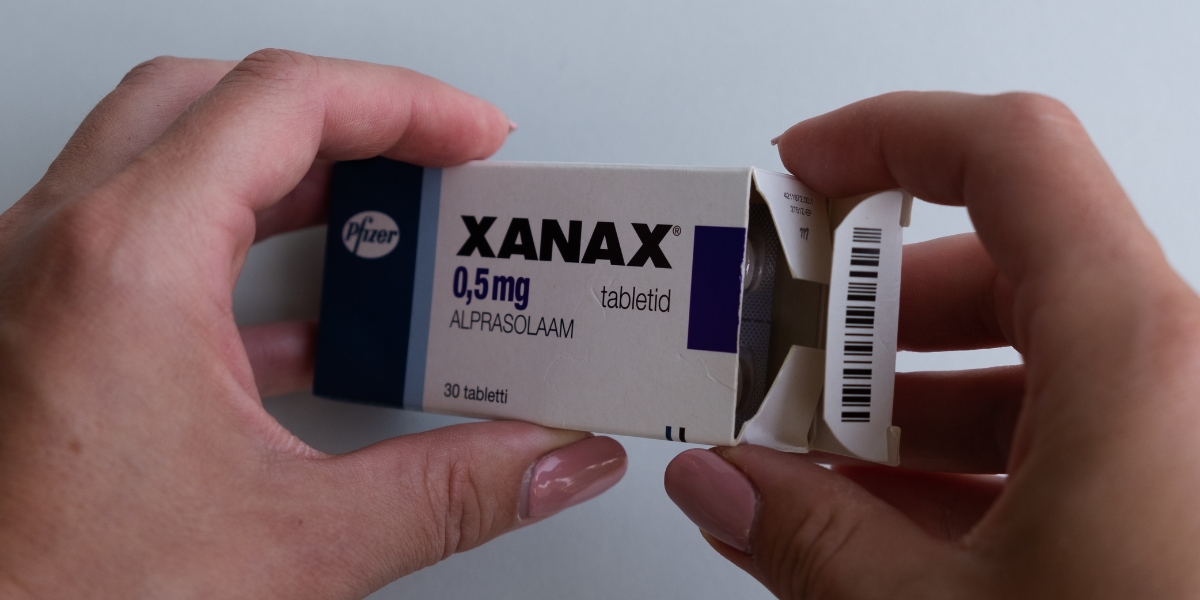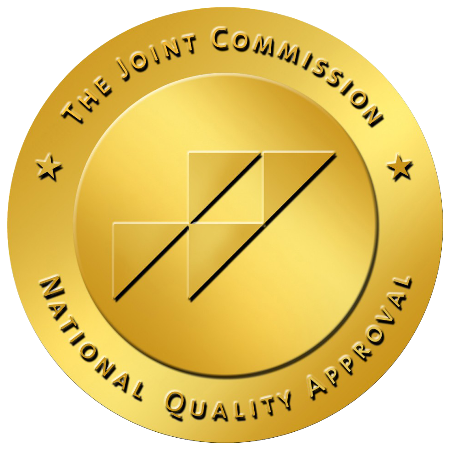Xanax Addiction Treatment and Rehab

As one of the most widely prescribed drugs in the United States, Xanax is also among the most abused and addictive medications. Xanax is the brand name for a prescription drug called alprazolam, a short-acting benzodiazepine prescribed to treat anxiety, panic attacks, sleep disorders, and seizure disorders. It works quickly to treat the previously mentioned conditions and works just as quickly to cause dependence and addiction.
Finding Xanax addiction treatment and rehab can seem impossible for people actively using it to treat anxiety or avoid Xanax withdrawal symptoms after a long period of time dependent on it. However, if you have decided to stop taking Xanax, there are treatment options that address the physical dependence and the mental health conditions that led you to use it in the first place.
Why Is Xanax So Addictive?
Xanax is so addictive because of how quickly, powerfully, and effectively it causes feelings of calm and euphoria, easily resulting in tolerance and physical dependence.
GABA transmitters throughout the central nervous system send signals and responses between cells in the brain and body and determine the internal reaction to external stimuli and situations. Those signals are overactive for people experiencing anxiety or panic attacks and cause disproportionately extreme feelings and physical reactions. Xanax binds to GABA receptors and essentially filters out and slows down the influx of information, allowing the person to calm down and become less stimulated.
Imagine spending a large portion of your waking life overstimulated and on the edge of panic; a sudden calming sensation washing over you is a feeling you’d want to experience as much as possible. That’s one aspect of why it is so addictive; people rely on it for mental relief and peace of mind.
Physically, Xanax abuse first causes tolerance, then dependence. Tolerance means that previously effective doses no longer work, and a person must take more frequent or higher doses to feel the same effects. The brain quickly adapts to this benzo’s constant presence, modifies its chemical production to adjust and maintain balance, and becomes dependent on the drug to function normally.
People taking Xanax for as little as three weeks can develop tolerance and dependence and will experience withdrawal symptoms when they stop taking Xanax.
Benzodiazepine withdrawal is intense, severe, and in some cases, life-threatening. People who attempt to stop taking Xanax often relapse because of the acute withdrawal symptoms, then continue to use it to avoid getting dope sick, perpetuating the addiction cycle.
Interestingly, Xanax is the preferred benzodiazepine for abuse by people with a history of alcohol and opiate substance use disorders due to its quick onset and potent effects.
What Does Xanax Feel Like?
In both prescription and recreational users, Xanax mentally causes feelings of relaxation, euphoria, and reward. Physically Xanax is described as a full-body buzz that makes users feel sedated and drowsy with heavy limbs.
Of course, these are the desired effects that will vary for everyone. As with any medication, legal or illicit, users can experience other side effects that are less than pleasant and dangerous, especially in combination with other substances.

Side Effects
The side effects of Xanax and long-term abuse vary for everyone and can range from mild to life-threatening. Most side effects will disappear once Xanax is out of the system; however, for long-term users, it can build up and cause more intense side effects.
Side effects of Xanax include:
- Headache
- Dizziness
- Dry mouth
- Nausea
- Vomiting
- Slurred speech
- Difficulty staying awake
- Blurred vision
- Reduced attention span
- Memory loss
- Loss of coordination
- Muscle weakness
- Abdominal cramping
- Diarrhea
- Constipation
- Worsening mental health issues
- Swollen hands and feet
- Slowed breathing
- Changes in heart rate and blood pressure
- Respiratory depression
- Seizures
- Suicidal thoughts
- Depression
- Sleep disturbances
- Sexual dysfunction
- Tolerance
- Withdrawal
Some of the side effects of Xanax abuse will be immediate; others will develop over time the longer it is abused.
Combining Xanax with other drugs and alcohol, especially central nervous system depressants or downers, significantly increases the risk of adverse effects and a Xanax overdose. According to the National Institute on Drug Abuse (NIDA), almost 16% of opioid overdose deaths involve benzodiazepines.
You should always seek advice and medical supervision if the side effects of Xanax become overwhelming or if you are ready to stop taking it. Doctors can review your treatment options and provide suggestions for treatment centers.
Xanax Addiction Signs
Signs of Xanax addiction, like most prescription drug abuse, can be challenging to recognize in the beginning stages. Unfortunately, Xanax addiction progresses quickly, and the physical, mental, and behavioral signs become more apparent.
Signs of Xanax addiction include:
- Running out of Xanax quickly
- Taking more or higher doses than prescribed
- Accepting, buying, or stealing it from friends and family members
- Panicking when they are low on the drug
- Visiting multiple doctors for more prescriptions
- Mixing it with other drugs and alcohol to enhance the effects
- Changes in sleep patterns
- Appetite changes
- Drastic changes in appearance like weight loss or gain
- Neglecting personal hygiene
- Becoming hostile and defensive when people question their drug use
- Putting themselves in risky situations to get and use it
- Financial trouble
- Ignoring personal, social, and professional commitments
- Constant drowsiness or fatigue
- They experience symptoms of withdrawal when they cannot get more benzodiazepines
While only a professional can officially diagnose a substance use disorder, friends and family who recognize these signs can start a conversation and voice their concerns to their loved ones.
Some addiction centers can provide or refer you to a professional interventionist to help guide the conversation and encourage the person to seek treatment.

Understanding Xanax Addiction
The most important thing to understand is that Xanax addiction is not a moral failing or a choice; substance use disorders are medical conditions that can affect anyone.
Addiction to Xanax is prevalent partially because many people struggle with anxiety and mental health, and unfortunately, medication is often more acceptable and accessible than proper mental health care.
Some people were prescribed Xanax short-term and continued to take it, while others sought it on their own and enjoyed the effects. Regardless of how they became addicted, once addiction has taken hold of someone, professional help is usually required.
People dependent on Xanax will experience withdrawal symptoms when they stop taking it or even try to taper their doses incorrectly. Avoiding the unpleasantness of withdrawal from Xanax is one of the main reasons people starting the recovery process cite for their continued use.
People who use Xanax to treat anxiety or other mental health conditions, be it with a prescription or self-medication, become reliant on it to regulate their moods and feel at ease. The belief that they cannot function normally without Xanax can become a self-fulfilling prophecy. Others never learned healthy ways to feel relaxed and unwind and rely on the effects of Xanax to provide those feelings.
Many addiction treatment programs offer supervised medical detox to help ease withdrawal symptoms. Detox is only the first step to overcoming addiction, but studies have demonstrated that people with support and mild withdrawal experiences are more receptive to follow-up treatment approaches.
Some people may have undiagnosed mental health issues and need help learning to manage them using medication-assisted treatments combined with therapeutic approaches. Cognitive behavioral therapy (CBT) can help reframe how a person reacts to stress and anxiety and learn to overcome the urge to resort to abusing the anti-anxiety medication.
Licensed and accredited treatment centers can determine each patient’s needs and the most effective forms of therapy and treatment plans.

Xanax Addiction Treatment in Northridge, California
If you or a loved one are ready to seek treatment for alprazolam addiction, Northridge Addiction Treatment Center can help.
Located in the San Fernando Valley, just outside Los Angeles, our residential treatment center offers you serenity and privacy. A supportive, nurturing environment surrounded by a compassionate and empowering treatment team that can provide the fresh start you need for your recovery journey.
We offer onsite medical detox with 24-hour care and medical supervision to safely get you through withdrawal.
NATC’s licensed and experienced addiction specialists work closely with you to address every aspect of your addiction, not just the symptoms. Through individual and group therapy, we help you learn healthy coping skills, strategies, and self-care to help you deal with triggers and cravings in productive ways that strengthen your recovery.
Our treatment experts are eager to help you discuss your treatment options and reach lasting recovery. Reach out to us now and reclaim your life.
Find Meaningful Recovery
Our caring and compassionate specialists are eager to help you comfortably navigate this journey to recovery. Our individualized treatment plan, programs, and therapies may be a perfect match for you or your loved one. Let us assist you in living the happy life you deserve. It starts with a phone call.




